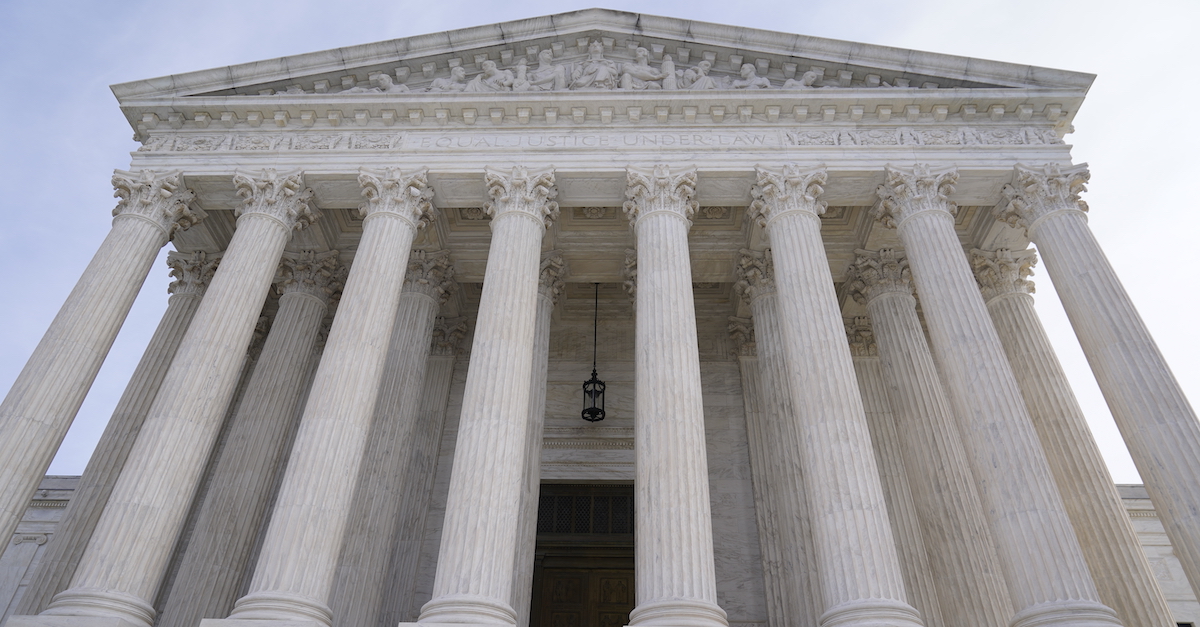
The U.S. Supreme Court on Wednesday, Jan.19, 2022, in Washington. (AP Photo/Mariam Zuhaib)
The Supreme Court has not been able to identify who leaked the draft opinion eliminating the guarantee of abortion rights nationwide, despite an investigation that yielded more than 100 interviews.
In a 20-page report issued Thursday, the Marshal of the Supreme Court detailed the major steps of its investigation and revealed that it still couldn’t determine who leaked the draft opinion. An early version of the bombshell ruling was leaked to Politico in May, and in June, the decision was final: Roe v. Wade, which had guaranteed abortion access up to the point of fetal viability, was no more.
The leak sparked waves of concern and protests nationwide, and Chief Justice John Roberts announced the next day that he had ordered the Marshal of the Court to investigate.
“This was a singular and egregious breach of [] trust that is an affront to the Court and the community of public servants who work here,” Roberts said at the time.
Thursday’s report took a similarly somber tone, saying in a statement that the leak was “a grave assault on the judicial process” and an “extraordinary betrayal of trust.”
Despite an apparently thorough investigation, however, the Marshal’s office didn’t name a culprit.
“[T]he team has to date been unable to identify a person responsible by a preponderance of the evidence,” a message from the Supreme Court issued with the report said. The Marshal also determined that the leak was not the result of a hack.
Investigators found that some court employees had emailed the draft to other employees “with approval,” but there was “no evidence discovered that anyone emailed the draft opinion to anyone else, although technical limitations in the Court’s computer recordkeeping at the time made it impossible to rule out this possibility entirely.”
The Marshal’s office conducted 126 formal interviews of 97 Supreme Court employees, the report says. All the employees denied leaking the draft to Politico, and investigators were not able to determine who did it, or even how it was done.
“[I]nvestigators have been unable to determine at this time, using a preponderance of the evidence standard, the identity of the person(s) who disclosed the draft majority opinion in Dobbs v. Jackson Women’s Health Org. or how the draft opinion was provided to Politico,” the report says. “Investigators continue to review and process some electronic data that has been collected and a few other inquiries remain pending. To the extent that additional investigation yields new evidence or leads, the investigators will pursue them.”
The report indicates that the investigation might have been stymied somewhat by outdated technology that limited what investigators could see.
“The investigators were not able to readily search and analyze all event logs [of employee computers] because at the time the system lacked substantial logging and search functions,” the report says, although it notes that despite not finding any logs or IT data to indicate the opinion was downloaded to “removable media,” it is “impossible to rule out” that possibility.
Even a review of personal call and text records from employees’ cell phones didn’t reveal who leaked the draft, the report says. Nor did a review of search terms for legal research.
While the employees and personnel were forthcoming with their devices, they were apparently tight-lipped when it came to implicating their colleagues.
“The interviews provided very few leads concerning who may have publicly disclosed the document. Very few of the individuals interviewed were willing to speculate on how the disclosure could have occurred or who might have been involved,” the report says.
The document itself, as posted to Politico, was also a dead end.
“The investigators obtained a forensic examination of the digital image of the draft opinion that was posted on Politico’s website to compare against exemplars obtained from Court printers and copiers,” the report says. “There was nothing of evidentiary value that could be gleaned from the electronic copy of the draft opinion when compared against the exemplars.”
Forensic examinations of a court-provided printer for an employee’s home use and of “fingerprint analysis of an item relevant to the investigation” were similarly unproductive.
Unable to determine who shared the draft with Politico, the investigator’s didn’t entirely rule out the possibility that the whole thing could have been an accident.
“Investigators also cannot eliminate the possibility that the draft opinion was inadvertently or negligently disclosed – for example, by being left in a public space either inside or outside the building,” the report says.
The Marshal’s office did make some recommendations as to how to tighten security going forward, including limiting who has access to sensitive information and improving the ability to track who is accessing and handling documents. The report also recommended that the Supreme Court clarify its confidentiality policies and training, update its information security policies, and track who is printing what documents and where those documents end up.
The Marshall’s office also said the court needs to clean up how it disposes of what it no longer needs.
“The Court’s current method of destroying Court-sensitive documents has vulnerabilities that should be addressed,” the report says.
Read the report below.
Have a tip we should know? [email protected]